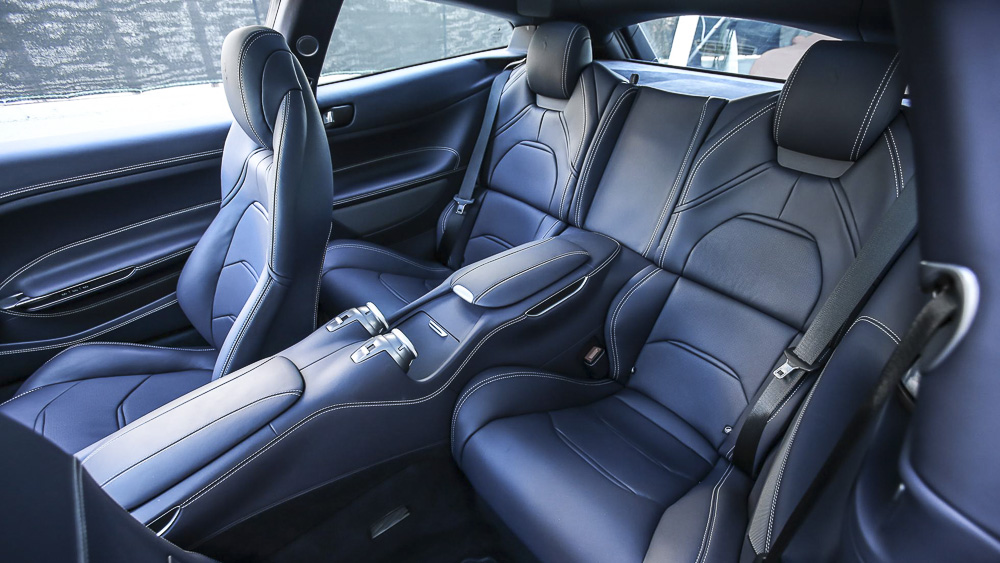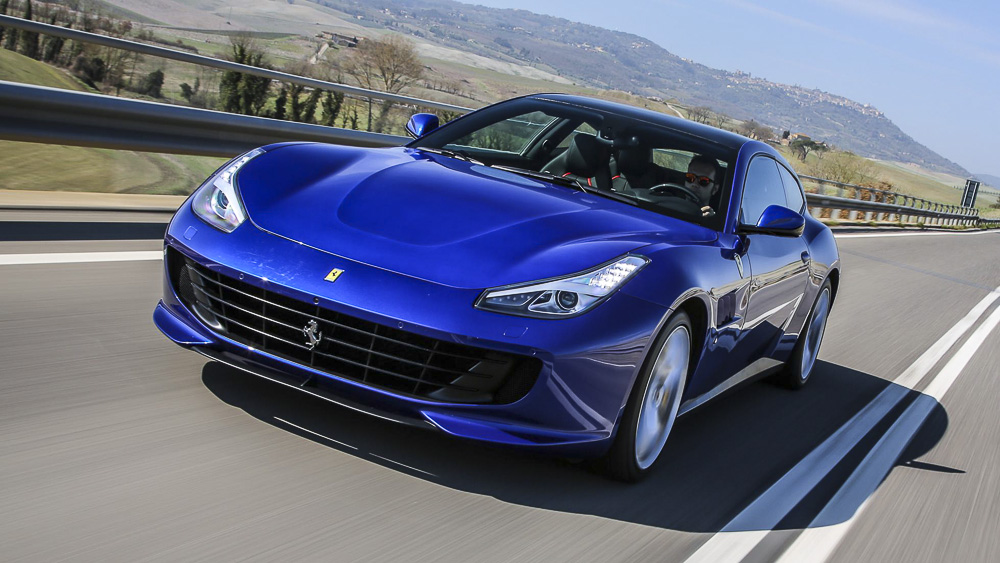
A new Ferrari!
It is. If you ask Ferrari, the GTC4 Lusso T is a sixth model in its line-up. It’s only an upper case T away from the GTC4 Lusso, though, so we’d argue it’s an engine variant. Something which would make the GTC4 the first Ferrari with a choice of engines, unless you include some odd 2.0-litre-engined tax-busting specials from the 1980s.
Beneath its long front bonnet – though tucked almost centrally in the car, behind the front axle – is a 3.9-litre V8 turbo engine, driving only the rear wheels. That positions it somewhat differently to the regular Lusso, with its naturally aspirated 6.3-litre V12 and four-wheel drive. More affordable, too: this Lusso T is over £30,000 cheaper, starting at a whisker under £200,00.
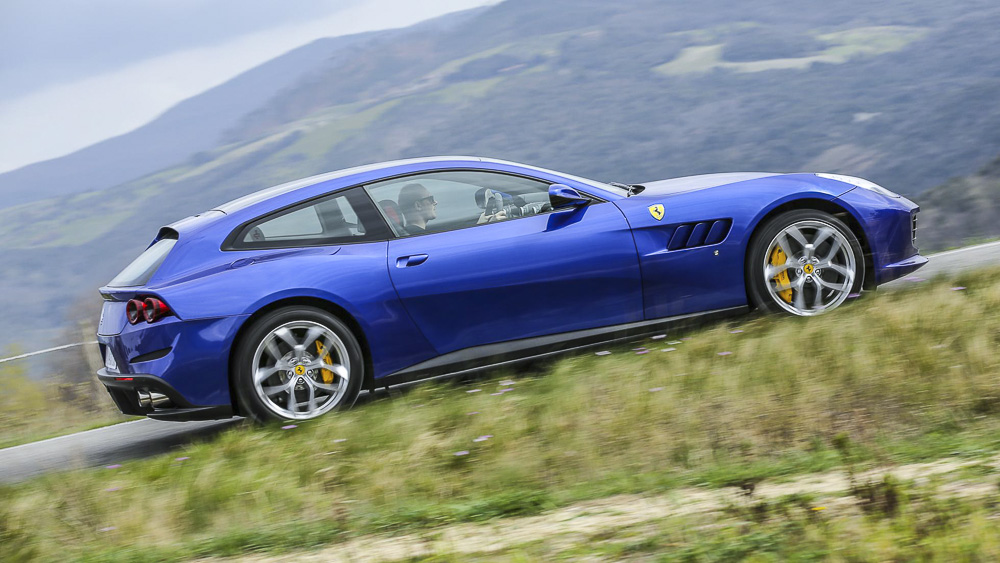
What else is new?
Not a huge amount. Ferrari’s other array of chassis technology – electronic differential, four-wheel steering, Side Slip Control – is all fitted, each in its most up-to-date configuration. And unless you spec some fancy exhaust tips and the Lusso T’s exclusive design of 20in wheels, it looks identical to a V12 Lusso, too.
Performance must be worse though?
Barely. This V8 produces 603bhp and 759Nm, pegging it nearly 80bhp south of the V12. But such is life with turbochargers, there’s more torque. So its 3.5sec 0-100kph time is just 0.1sec slower than the V12, and its 320kph top speed a mere 14kph down. An inconsequential difference to all but the vainest of people.
But when it takes mere seconds to spec £30k of options on Ferrari’s online configurator, why bother with the cheaper, slightly slower car? Well, this is where Ferrari insists it’s a different proposition. Rear-drive makes it lighter and more agile, with a more rearward weight bias than before (46:54 to the rear, rather than 48:52), and so there’s less understeer.
In some counties it will be significantly easier to tax, while there’s also – theoretically – 30 per cent more fuel range. The 91-litre tank is no bigger, but such is the potential advantage of the V8’s 11.4L/100km against the V12’s 15L/100km, long distance journeys should be easier. Given it’s a four-seat Ferrari with a big (ish) boot, that ought to make choosing the cheaper car a no-brainer.
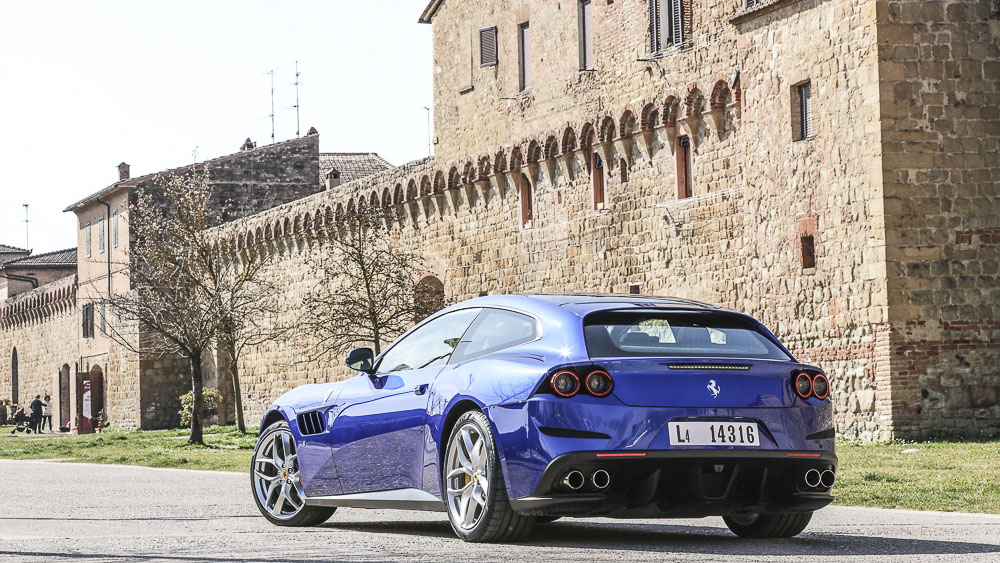
And is it?
In accelerative terms, perhaps. At full throttle the V8 Lusso T doesn’t stop for breath. While peak torque doesn’t arrive until 3,000rpm, there’s no hint of lag, and if you’ve prodded the seven-speed paddleshift gearbox into manual mode (which really ought to be part of your starting procedure) it’s very easy to bump into its 7,500rpm limiter. Doing so isn’t violent, but it’s a bit unexpected, as there’s no crescendo of noise or revs before you arrive there. And the rev-counter goes teasingly to ten.
So muscular is the engine, that on a typical twisting road, you can leave it in third and not change gear for miles. Drop to second for a corner and you’ll only need to change back up right as you exit. And such is the reach of third gear – past any speed limit you’ll care to name – fourth is unnecessary. It’s unfalteringly quick, this car.
But it’s not exciting or inspirational enough, at least not by Ferrari’s usual standards. Being allowed another 500rpm might help, something the 488 GTB’s turbo engine provides. The act of building speed is thrilling, but there’s not enough titillation of your ears to go with the thump in your back. Perhaps if there wasn’t already a V12 version of the Lusso, we wouldn’t care…
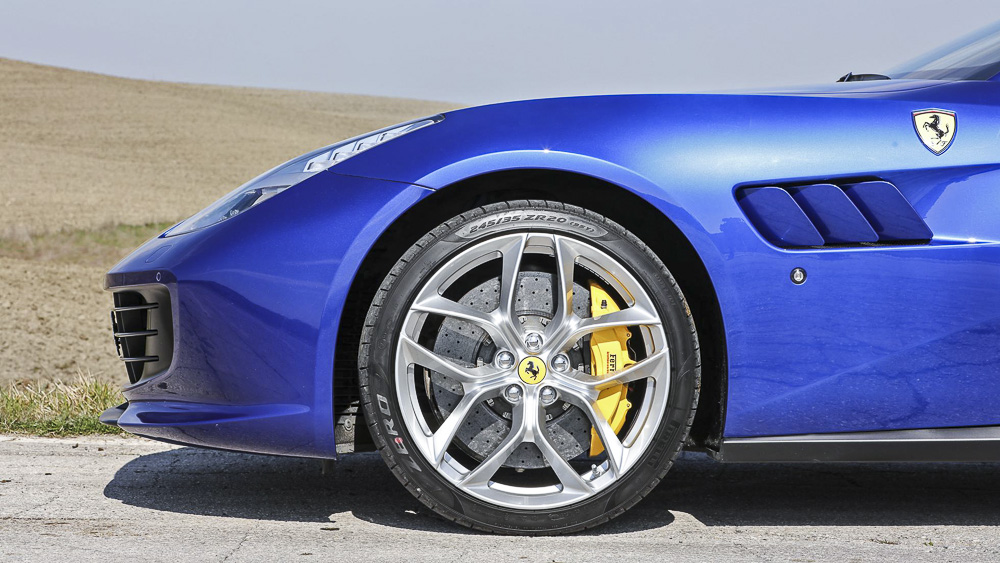
How does it handle without four-wheel drive?
There’s still absurd amounts of grip. Ferrari informs us it doesn’t need four-wheel drive to boost handling, as its various forms of electronic wizardry means it can make a car accessible with rear-wheel drive. And unless you’ve hopped into this Lusso T while the tyres are cold, it’s exactly right.
There’s no understeer. Supremely eager steering (a Ferrari trait, and one which takes a short while to get used to) turns the car in with staggering precision, no matter your entry speed. This car is 4.9 metres long, 2 metres wide and it weighs 1.8 tons, but you get no sense of its scale while driving.
As usual, there’s a Manettino switch on the steering wheel. It flicks through ice, rain, comfort and sport modes, all the way to ESC off, to loosen the stability control and awaken the Side Slip Control. You can also push the ‘bumpy road’ button to pair the comfort suspension and sport engine settings, which away from a circuit, is probably the ideal setup.
In the Lusso T’s tamer modes you might sense the stability control nibbling away at the power as you exit a corner. Pare the electronics right back, though, and it doesn’t transform into a wildly expressive car that wants to paint black lines on the road. Instead it becomes hyper agile, moving very subtly beneath you and egging you on into driving it like you might an RS Audi. Its pace is astonishing.
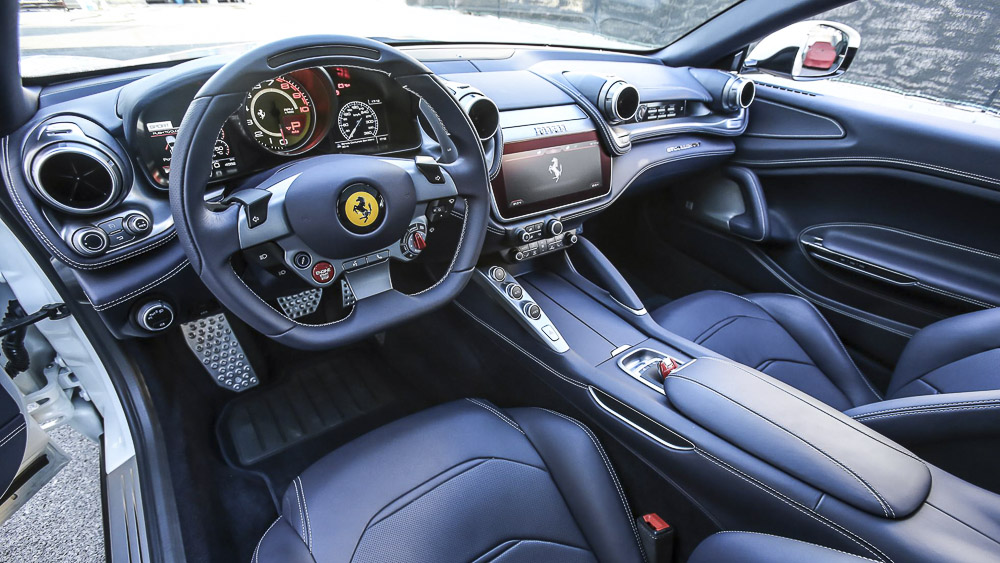
So does it ride well?
On a badly broken country road it does a remarkable job of shrugging off the surface beneath, but it doesn’t do so quietly. Big bumps and ruts don’t knock the car off its line, but do shudder through the seats a bit. It may look like a GT car, but it’s as stiff as a sports car, even with the suspension at its comfiest.
The same rings true when you’re driving it in a saner manner. While the engine is very hushed at a constant speed – you won’t hear it at 113kph – some of Italy’s more neglected motorways really shook through the cabin for us, and the suspension was making a bit of a racket dealing with it all. This isn’t a cocooning four-seater like a Bentley Continental or Aston Martin DB11. But naturally it’s sharper than both as a result.
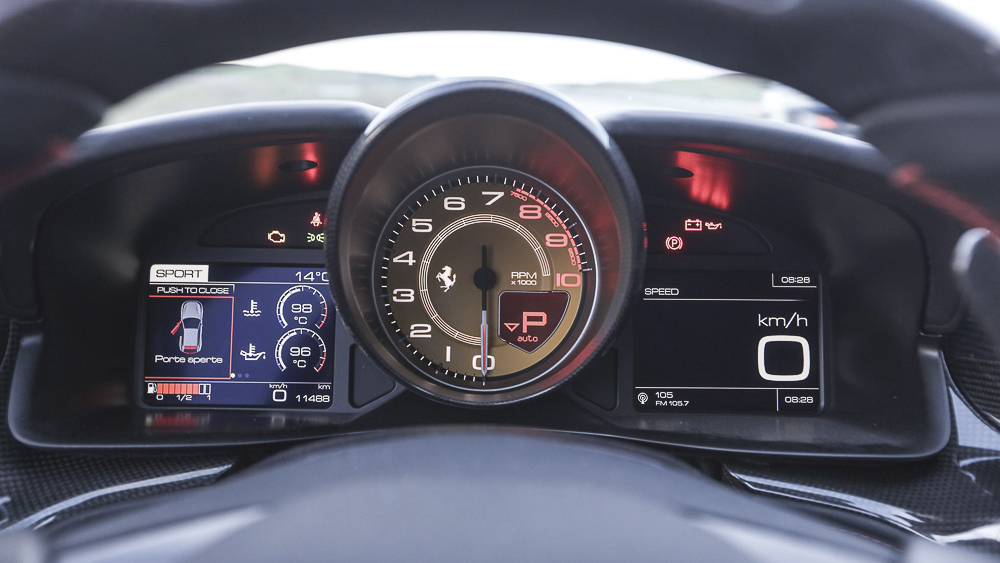
So which GTC4 should I have?
There’s lots to like with this turbocharged Lusso T. Its performance is bombastic and it genuinely feels closer to a sports car for four than an eager GT, perhaps its biggest trump card over the V12 Lusso.
It’s an easy car to drive quickly for a very sustained period of time. But do so and it’ll empty its fuel tank in two hours, negating its claimed fuel economy benefits, while our inner luddites really do wish it revved more. We’d trade £30k for another four cylinders, 2.4 litres and a 750rpm-higher redline. We’d have the V12 GTC4 Lusso.
But Ferrari sees the sales split between these cars varying wildly around the world. Differing methods of taxation could separate their prices and running costs to a far greater degree in countries other than the UK. In places the V8 Lusso T makes more sense, we suspect it’ll still be a mighty fine car to own.
